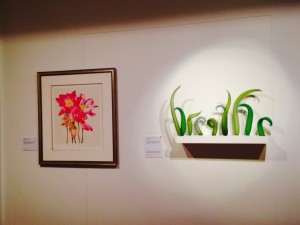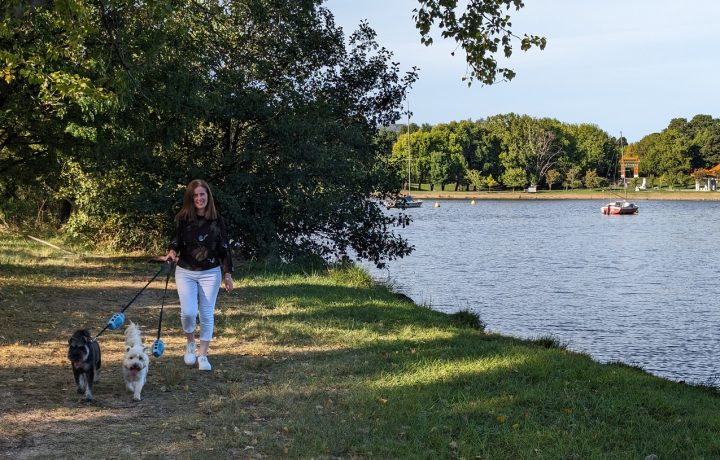Waterhouse Prize: where art and science meet
Posted on

‘Breathe’ — an intricate glass sculpture by Harriet Schwarzrock is awarded Prize for Sculpture and Objects.
In an episode of The Big Bang Theory Dr Sheldon Cooper refuses to attend a university fundraiser. Pragmatic Dr Amy Farrah Fowler delivers a dire warning that unless he starts making nice with wealthy patrons, funding for his work could go to, horror of horrors, the liberal arts. “Oh, the Humanities,” he wails in despair.
That split between arts and science is a modern one, but one that crops up in arguments about rationality versus sentiment and logic versus imagination. For hundreds of years though, from the Renaissance up to the early 20th century, art and science went hand in hand, mutually revealing discoveries that changed the world.
The South Australian Museum’s Waterhouse Natural Science Art Prize brings the disciplines closer, with science themes interpreted and represented through visual arts. This year’s prize had more than 700 entries, and 33 of the top entries are now on display at the National Archives of Australia, tackling climate change, natural wonders and the loss of species.
“Science is struggling but with the exhibition we’re asking people to think about what science means for them,” says Tim Gilchrist, Galleries Manager with the South Australian Museum.
Three Canberra artists, Nicola Dickson, Emilie Patteson and Harriet Schwarzrock are included in this year’s exhibition of the top finalists, each with a unique style.
Nicola Dickson invokes the sense of wonder 19th century botanists felt encountering unknown species of flora and fauna in this new world. A self-described ‘archives nerd’, she delved into records at the National Library, as close to going back in time as possible, to follow in the footsteps Ferdinand Bauer on Matthew Flinders’ voyages.
[pe2-image src=”http://lh5.ggpht.com/-cA9HygxzU50/VDuOG0W6B6I/AAAAAAAAJw0/tkapVYSDcws/s144-c-o/Nicola-Dickson_tcm16-82824.jpg” href=”https://picasaweb.google.com/108454826374315674707/2014WaterhouseNaturalScienceArtPrizeExhibition#6069601170596956066″ caption=”Nicola Dickson – Highly Commended finalist in the 2014 Waterhouse Natural Science Art Prize” type=”image” alt=”Nicola-Dickson_tcm16-82824.jpg” pe2_caption=”1″ pe2_img_align=”center” ]
Emilie Patteson mixes plant samples with glass to create frozen moments in time. Taking her inspiration from natural history collections, she immersed burning wattle in molten glass, creating trails of amber coloured air bubbles in its wake. The top of each botanical tube houses a different wattle specimen, and the result is what she calls Preserved Impermanence.
“Each single specimen is from Canberra; the landscapes inspires me all the time and wattles are so iconic,” Emilie says.
[pe2-image src=”http://lh6.ggpht.com/-JReDXefEf4I/VDuOHgJQpMI/AAAAAAAAJxI/dyMWUYeZREQ/s144-c-o/Emilie%252520Patteson.jpg” href=”https://picasaweb.google.com/108454826374315674707/2014WaterhouseNaturalScienceArtPrizeExhibition#6069601182350877890″ caption=”Emilie Patteson’s glasswork with wattles received a Highly Commended in the 2014 Waterhouse Natural Science Art Prize.” type=”image” alt=”Emilie Patteson.jpg” pe2_img_align=”center” pe2_caption=”1″ ]
Emilie’s time at the Canberra School of Art encouraged her to work in glass, and she describes regularly coming to see the annual exhibition of Waterhouse finalists when she was a student. She says receiving the letter telling her she was selected as one of this year’s highly commended artists was thrilling and exciting, and comes close on her graduation in 2012.
A panel of independent judges select the finalists and the exhibition juxtaposes different artistic styles and visions. An intricate glass sculpture by Harriet Schwarzrock spells out breathe, capturing a physical and involuntary response to the natural world.
Each of the Canberra artists feel extremely privileged to have their work chosen from all the entries, with Harriet awarded Prize for Sculpture and Objects and Emilie and Nicola both Highly Commended. They are equally fascinated by the other artists’ interpretation of the overlap between science and art.
Canberra is the only location the exhibition travels to outside of the South Australian Museum, showing the strength of the partnership between the museum and the NAA. Visiting the exhibition is a reminder that not only does art and science coexist, together they reveal the wonders of the world around us.
The essentials
What: 2014 Waterhouse Natural Science Art Prize
Where: National Archives of Australia, Queen Victoria Terrace Parkes
When: On now until Sunday 9 November 2014.
How much: Free
Web: www.naa.gov.au


Leave a Reply
You must be logged in to post a comment.